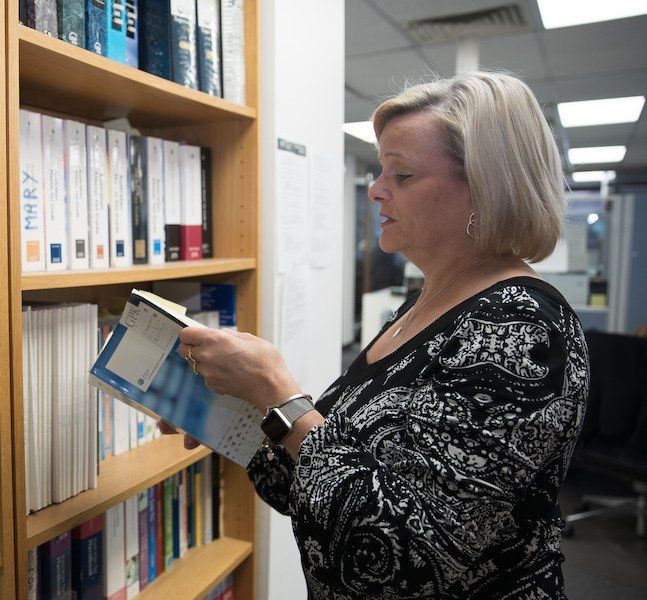12 Apr, 2023
The Fringe Benefits Tax (FBT) year ends on 31 March. We’ve outlined the hot spots for employers and employees. FBT updates and problem areas FBT exemption for electric cars Work from home arrangements Car parking changes Mismatched information for entertainment claimed as a deduction and what is reported for FBT purposes Business assets personally used by owners and staff Employee contributions for FBT purposes and salary sacrifice Not lodging FBT returns Travelling or living away from home Housekeeping essentials Important FBT issues FBT exemption for electric cars Electric cars still represent a small proportion of the new car market in Australia. With the aim of increasing their take up, the Government has passed legislation that provides a FBT exemption effective from 1 July 2022 for certain no or low emissions vehicles. This means that providing your team members with the use of electric cars, hydrogen fuel cell electric cars or plug-in hybrid electric cars can now potentially qualify for a FBT exemption. This should normally be the case where: The value of the car is below the luxury car tax threshold for fuel efficient vehicles (which is $84,916 for 2022-23 financial year); and The car is both first held and used on or after 1 July 2022. When providing these exempt car benefits, it is important to be aware that your business would still need to work out the taxable value of the car benefit as if the FBT exemption didn’t apply. This is because the value of this exempt car benefit is still taken into account in the reportable fringe benefits amount of the employee. While income tax is not paid on this amount, it can impact the employee in a range of areas (such as the Medicare levy surcharge, private health insurance rebate, employee share scheme reduction, and social security payments). This means the employee’s own home electricity costs incurred on charging the electric vehicle would often need to be worked out. One reason for this is that it can used as an employee contribution to reduce the value of the benefit. Because of the practical difficulties involved with working this out, the ATO has recently released a draft guideline providing a 4.20 cent per km rate that can potentially help. Just be aware that these guidelines do not apply to plug-in hybrid vehicles. Work from home arrangements While offices and work sites have largely re-opened, many employees continue to work from home either on a full-time basis or for at least part of the work week. Some businesses may have provided their employees with work-related items to assist their employees when working from home. Portable electric devices such as laptops and mobile phones are commonly used for work. Providing such devices to your employees shouldn’t trigger a FBT liability, as long they are primarily used by your employees for work. Where multiple similar items have been provided during the FBT year, the situation becomes more complex unless your business has an aggregated turnover of less than $50m (previously, this threshold was less than $10m). If an FBT exemption isn’t available, it is often worthwhile instead considering whether the FBT liability of such items could be reduced to the extent the employee could claim a once-only deduction in their personal return (i.e., had they purchased the item themselves). Car parking changes A controversial ruling from the ATO expands the scope of the FBT rules dealing with car parking benefits. This is because the ruling changes the ATO’s view on what constitutes a commercial parking station. It can now include parking stations that charge penalty rates for all-day parking to the public, such as those normally located in shopping centres. Where an employer provides: Car parking facilities for employees within 1km of a commercial parking station, and That commercial car park charges more than the car parking threshold ($9.72 for the year ended 31 March 2023) a taxable car parking fringe benefit will normally arise unless the employer is a small business and able to access the car parking exemption. This new expanded definition of a commercial parking station applies from 1 April 2022. If you provide car parking facilities to team members, it is important that you either: Have certainty that you are able to access the small business exemption which has a more generous turnover threshold of less than $50m from 1 April 2021 onwards; or Understand the implications of the ruling to the car park facilities you provide. Mismatched information for entertainment claimed as a deduction and what is reported for FBT purposes One of the easiest ways for the ATO to pick up on problem areas is where there are mismatches. When it comes to entertainment, employers are keen to claim a deduction but this is not recognised as a fringe benefit provided to employees. Expenses related to entertainment such as a meal in a restaurant are generally not deductible and no GST credits can be claimed unless the expenses are subject to FBT. Let’s say you taken a client out to lunch and the amount per head is less than $300. If your business uses the ‘actual’ method for FBT purposes then there should not be any FBT implications. This is because benefits provided to client are not subject to FBT and minor benefits (i.e., value of less than $300) provided to employees on an infrequent and irregular basis are generally exempt from FBT. However, no deductions should be claimed for the entertainment and no GST credits would normally be available either. If the business uses the 50/50 method, then 50% of the meal entertainment expenses would be subject to FBT (the minor benefits exemption would not apply). As a result, 50% of the expenses would be deductible and the business would be able to claim 50% of the GST credits. Business assets personally used by owners and staff Private use of business assets is an area that crosses across a whole series of tax areas: FBT, GST, Division 7A and income tax. Take the ATO’s example of the property company that claimed deductions for a boat on the basis that it was used for marketing the company. Large deductions were claimed relating to running the boat. This attracted the ATO’s attention and a review was carried out. The ATO discovered the boat was used by the director and other employees for private trips, and to host parties for people who had paid to attend the company's property seminars. When looking at the overall business activities, the ATO determined the director had purchased the boat primarily for their own private use. As a result, they disallowed the deductions and the private use of the boat was a fringe benefit for the employees of the company. The company had to lodge an FBT return and pay the resulting FBT liability, as well as the income tax shortfall, interest and penalties. Employee contributions for FBT purposes and salary sacrifice An issue that frequently causes confusion is the difference between the employee salary sacrificing in order to receive a fringe benefit and making an employee contribution towards the value of that fringe benefit. To be an effective salary sacrifice arrangement (SSA), the agreement must be entered into before the employee becomes entitled to the income (e.g., before the period in which they start to perform the services that will result in the payment of salary etc.). Where an employee has salary sacrificed on a pre-tax basis towards the fringe benefit provided – laptop, car, etc., they have agreed to give up a portion of their gross salary on a pre-tax basis and receive the relevant fringe benefit instead. As a starting point, the taxable value of the fringe benefit is the full value of the expense paid by the employer. The salary sacrifice arrangement doesn’t reduce the FBT liability for the employer. The employer recognises a lower cost of salary and wages provided to the employee as their ‘cost saving’, which results in lower PAYG withholding and in most cases, superannuation guarantee obligations, but they still recognise the full value of the fringe benefit as part of their taxable fringe benefit which is subject to FBT. The employee recognises that they have a reduced amount of salary and wages, and a non-cash benefit in the form of the fringe benefit. Not lodging FBT returns The ATO is concerned that some employers are not lodging FBT returns or lodging them late to avoid paying tax. The ATO will normally pay close attention to any employer that: Is registered for FBT but lodges late. If your business is likely to face delays in lodging the FBT return, it’s usually a good idea to get in touch with the ATO early and ask for an extension request; or Is not registered for FBT. If your business employs staff (even closely held staff such as family members), and is not registered for FBT, it’s essential you have reviewed your position and are certain that you do not have an FBT liability. If the business provides cars, car spaces, reimburses private (not business) expenses, provides entertainment (food and drink), employee discounts etc., then you are likely to be providing a fringe benefit. Make sure you have reviewed the FBT client questionnaire we sent you! Travelling or living away from home Historically, travel allowances have caused confusion for many businesses. With the ATO having finalised its key guidance on travel costs more recently, they are likely to focus on benefits relating to transport, meals and accommodation. If your business provides travel allowances to employees, you will normally need to consider whether they are living away from home or just travelling overnight in the course of work. Where your employees are travelling overnight in the course of work, travel allowances paid in relation to such travel are normally assessable to your employees. However, they might be entitled personally to claim deductions for some of their travel expenses. For workers that are living away from home, these living away from home allowances are dealt with instead through the FBT system as a fringe benefit. While the taxable value of the benefit is usually the amount paid, there are some generous concessions that can allow for some or all of the allowance to be FBT exempt if certain conditions are met. Making this distinction is therefore important. The ATO explains in TR 2021/4 when allowances should be classified as a travel allowance or a living away from home allowance. Helpfully, the ATO has also finalised a ‘safe harbour’ style approach in PCG 2021/3 which can be used specifically for this purpose. Housekeeping It can be difficult to ensure the required records are maintained in relation to fringe benefits – especially as this may depend on employees producing records at a certain time. If your business has cars and you need to record odometer readings at the first and last days of the FBT year (31 March and 1 April), remember to have your team take a photo on their phone and email it through to a central contact person – it will save running around to every car, or missing records where employees forget.







